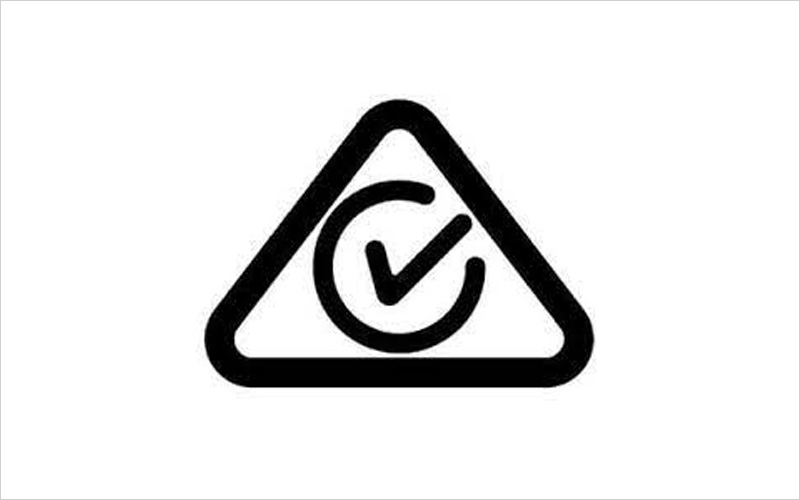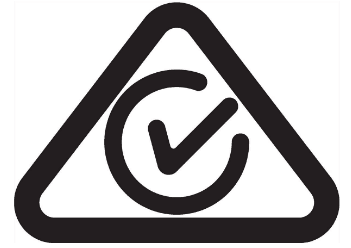
The latest certification requirements for Australian RCM certification
1. The new law was officially implemented on March 1, 2013.
2. SAA certification C-Tick certification will be phased out replaced by RCM certification, which covers safety regulations EMC (C—TIck may still be applicable to some low-power wireless products).
3. All electronic products will be divided into three categories: High, medium, low Risk. We do not have detailed ination on the scope of classification. Generally speaking, battery-driven products with a voltage below 12V are low-risk, 240V stard voltage products are medium-risk, high-voltage products are high-risk. The buffer period for low-risk products is 6 months, the buffer period for medium- high-risk products is 3 years (this period is the recommendation of the relevant Australian associations, but the government has not yet confirmed the specific laws).
4. 4. RCM certification can only be applied by a local company in Australia, the company must apply for an RCM number from the Australian government. Chinese manufacturers exporters can apply for IEC or AS/NZS reports in their own names, but the reports must be submitted to Australian importers to apply for RCM. The registration fee is 75 Australian dollars per product per trademark per year (for example, a company in Australia has two trademarks: A B. He imported the same batch of products from China, half of which was marked with the A trademark, one was marked with B’s trademark, which means that an annual registration fee of 150 Australian dollars must be paid).
5. According to the expert’s opinion, the importer will bear the risk of substard product quality (the responsible party), non-Australian companies cannot directly apply for RCM certification. It is estimated that more more small-scale Australian companies will change the practice of making reports applying for SAA at the expense of Chinese manufacturers in order to reduce costs. They will tend to appoint a laboratory with a certain ability reputation, provide insurance reports test data, then apply for Australian RCM certification.
6. In theory, an Australian laboratory can also act as an applicant to help a company obtain RCM certification. However, according to the expert’s opinion, due to the greater legal responsibility, it is estimated that most Australian laboratories will not take the initiative to take this risk. Even if they do, the related costs may be relatively high.
7. Australia New Zeal are introducing the RCM logo to achieve a unified identification of electrical products. The logo is a trademark owned by regulatory agencies in Australia New Zeal, indicating that the product meets both safety regulations EMC requirements is non-matory.

RCM logo
RCM = Safety + EMC + Importer Declaration
1. Safety (product safety certification):
Product safety certification includes two parts: electrical products are divided into regulated products (Prescribed Product) non-prescribed products (Non-prescribed products).
Controlled electrical products are classified according to AS/NZS4417.2, including electric heating equipment, refrigeration equipment, power tools, parts, etc. Among them, three certification units, Queensl, New South Wales Victoria, are the most active in the certification process. Controlled electrical appliances must obtain a Certificate of Approval issued by the monitoring department require a logo (must be marked with a certificate number) . The first letter of the certificate number indicates which state or region the certificate was issued by. Such as:
a) Q04051 (Queensl Queensl) --- Q Number
b) W2015 (Western Australia Western Australia) --- W Number
c) V03101 (Victoria Victoria) --- ESV Certificate V Number
d) NSW18099 (New South Wales)--- DOFT Certificate NSW Number
Unregulated electrical appliances can be sold directly without certification, but the manufacturer must ensure that the electrical safety of the product complies with the Australian stard AS/NZS3820:1998 (Essential Safety Requirements for Low Voltage Electrical Equipment); the monitoring department will be the product that meets the stard requirements Issuing a certificate of suitability (Certificate of Suitability). Electrical products that have obtained a certificate of suitability can be marked with a certificate number. The letter at the end of the certificate shows which state or region the certificate was issued by, such as:
a) CS/431/Q (Queensl)
b) CS/108/NSW (New South Wales)
2.EMC (Electromagnetic Compatibility)
Australia’s electromagnetic compatibility compliance plan is based on the 1992 Radio Communications Act (Radio Communications ACT 1992). It covers a wide range of products, including electric motor-driven heat-generating electrical products, power tools similar products, electric lights Similar equipment, television receivers audio equipment, ination technology products, industrial science medical equipment, ignition engines arc welding equipment, etc. The plan divides the products into three categories according to the degree of risk of electromagnetic interference generated by the products. The second third categories of products must be marked with C-Tick. But no matter which category the product belongs to, it must comply with relevant EMC stards.
First-class products: products that have only a slight impact on devices that use wireless spectrum, such as manual switches, simple relays, brushless squirrel cage induction motors, AC power supplies/power transers, resistors, etc. Such products can voluntarily apply for the use of the C-Tick mark during production sales.
Class II products: products that have a greater impact on devices that use wireless spectrum, such as microprocessors or digital devices with clocks, rectifiers or slip ring motors, arc welding equipment, switching power supplies, light adjustment Telecommunications terminal equipment in the category of ination technology (CISPR 22) (from the third category to the second category from November 7, 2003).
Three types of products: products that have a serious impact on devices that use the wireless spectrum, such as industrial, scientific, medical equipment, group 2 (CISPR11).
Related application matters of RCM
(1) If the product has CB national differences, you can directly transfer the Safety Certificate. Coupled with the EMC part, the agent can help out the announcement. The product can be sold to Australia marked with RCM Mark.
(2) Safety Certificate: When applying for the safety part, if the product is a direct plug-in, you need to do an AU Plug Test (Test Stard: AS/NZS 3112: 2004) for the product, if the product is a Desktop, you don’t need to do it This test.
(3) EMC Report --- either C-Tick Report (Test Stard: AS/NZS CISPR 22: 2002) or CE EMC Report.
The country where RCM certification is applicable?
Australia Nauru Fiji Solomon Isls Kiribati
Federated States of Micronesia Tuvalu New Zeal Tonga Marshall Isls Vanu Papua New Guinea Samoa
What is the RCM certification application process?
1.ALPHA laboratory evaluates products determines the test stards to be pered;
2. If there is any non-conity in the test, the manufacturer will make corrections to the product to meet meet the Australian stard requirements;
3. Pass the test issue a test report;
4. Submit the test report to the Australian certification agency for document review;
5. Australia has passed the review issued the RCM certificate;
6. Customers can complete the Australian website registration by themselves or by ALPHA;
What are the precautions for RCM?
1. The RCM logo needs to be added unily when the product is on. Note that this requirement was announced on April 19, 2013 in Australia.
2. When the in-line adapter is RCM safety certification, rom test of the plug should be done
3. Tube products: For example, T8 LED tubes fluorescent tubes can be directly replaced by users, which poses a greater safety risk. Samples need to be sent to Australia for evaluation
4. The time will be different for different issuing agencies